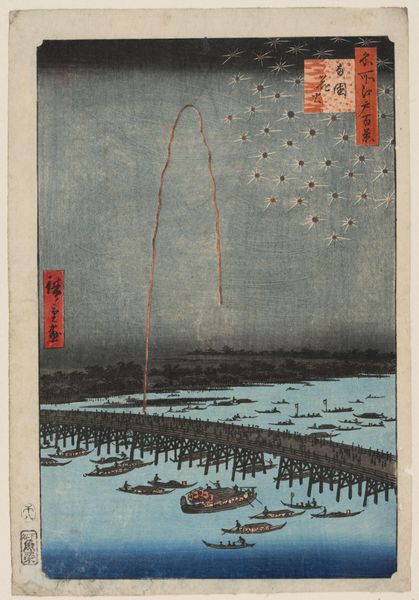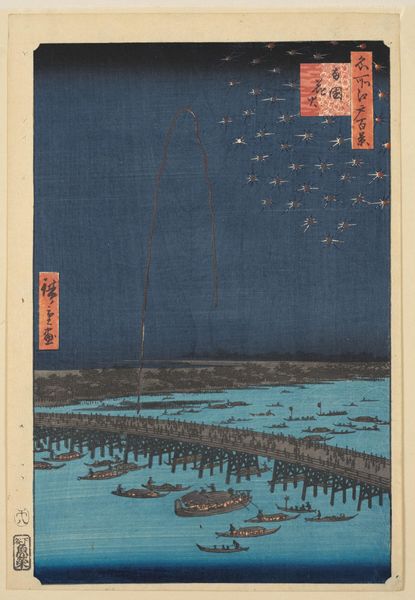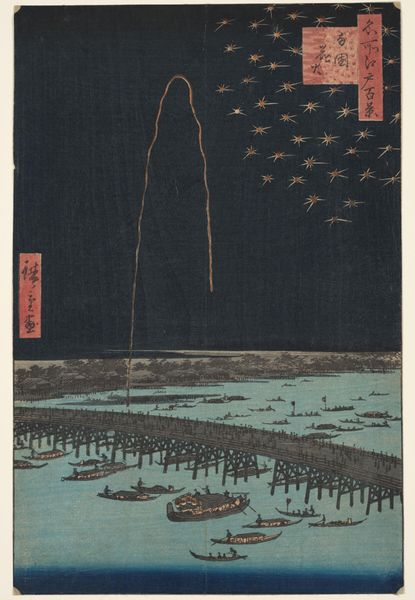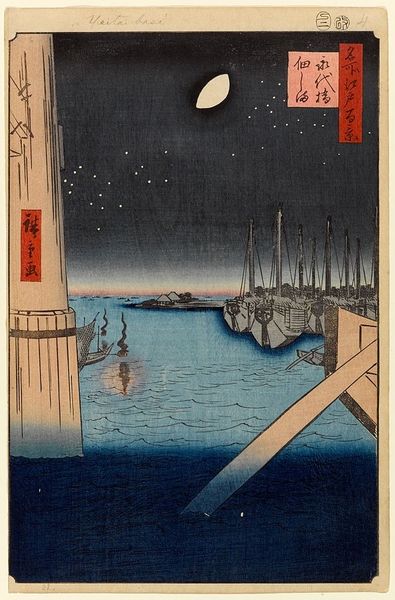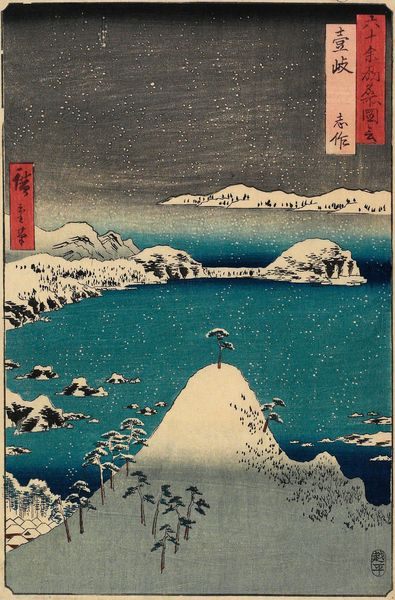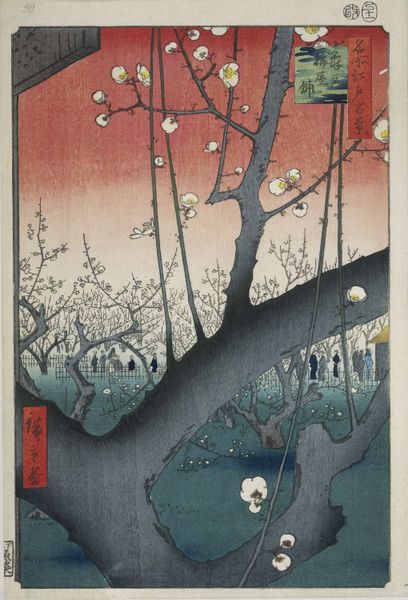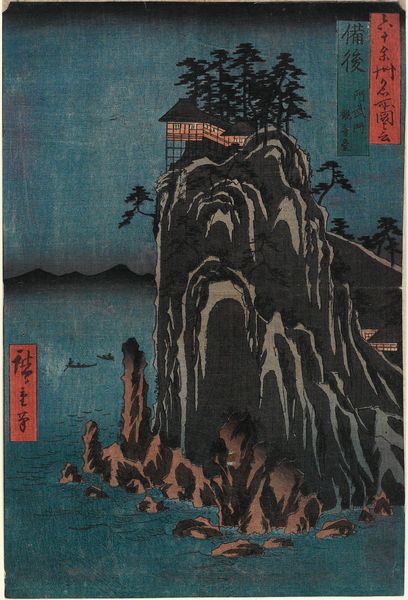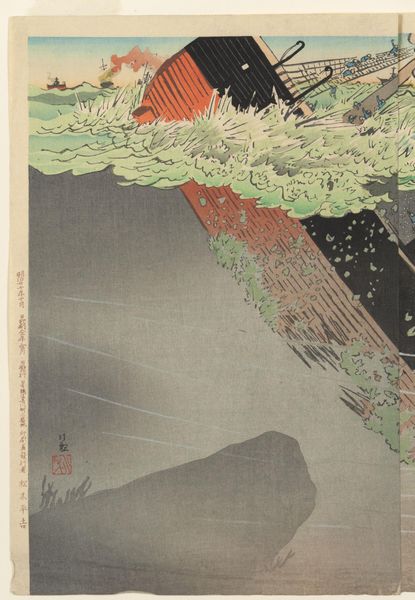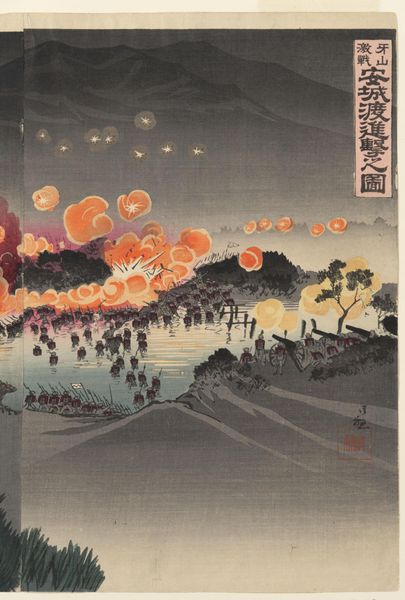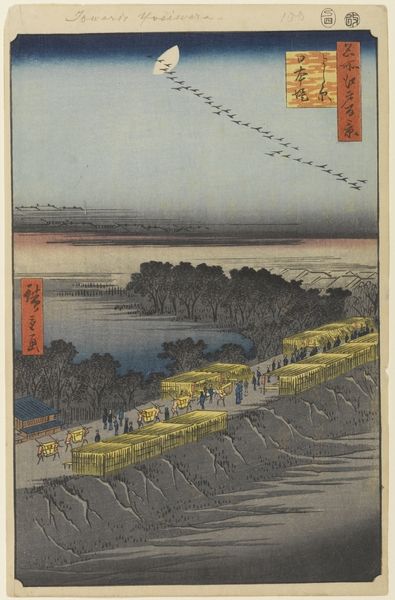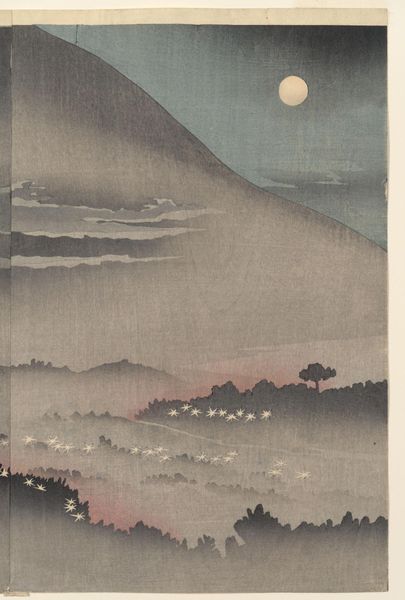
# print
#
asian-art
#
landscape
#
ukiyo-e
#
cityscape
#
watercolor
Dimensions: height 360 mm, width 243 mm
Copyright: Rijks Museum: Open Domain
Editor: Here we have Hiroshige’s "Fireworks at Ryogoku Bridge," created in 1858, a woodblock print now held at the Rijksmuseum. There's this fascinating contrast between the dark sky and vibrant bursts of light, capturing such a dynamic scene of revelry. What captures your attention most about this piece? Curator: I'm drawn to how Hiroshige utilized readily available, relatively inexpensive materials – woodblocks and pigment – to capture a leisure activity across all social strata. Woodblock printing democratized art. What labor was involved? How accessible was this scene to the working class he was picturing? Editor: That's an interesting perspective! I was initially thinking about the pure aesthetic pleasure, but thinking about the production makes it richer. Curator: Exactly! Think about the materiality itself: the layering of ink, the way the wood grain might subtly texture the sky. Woodblock printing was also inherently collaborative. The artist didn't carve the block themselves; skilled artisans did. The image represents collective making and consumption in its very means of production. The artist makes the first design only. How many people were involved? Editor: So you are focusing less on the individual genius of Hiroshige and more on the social system that enabled the artwork. Does that take away from his artistic skill, though? Curator: Not at all! It reframes our understanding. Hiroshige, as the designer, makes choices based on what can be achieved within that production system. He also operated within specific market demands and systems of distribution. Consider the networks through which these prints circulated, their affordability and the cultural function they served for a broad public, not just the elite. Editor: I hadn't considered it that way. It’s less about individual brilliance and more about this intersection of skill, labor, and material conditions. Curator: Precisely. Seeing art through that lens enriches our understanding of its cultural and historical value.
Comments
No comments
Be the first to comment and join the conversation on the ultimate creative platform.
